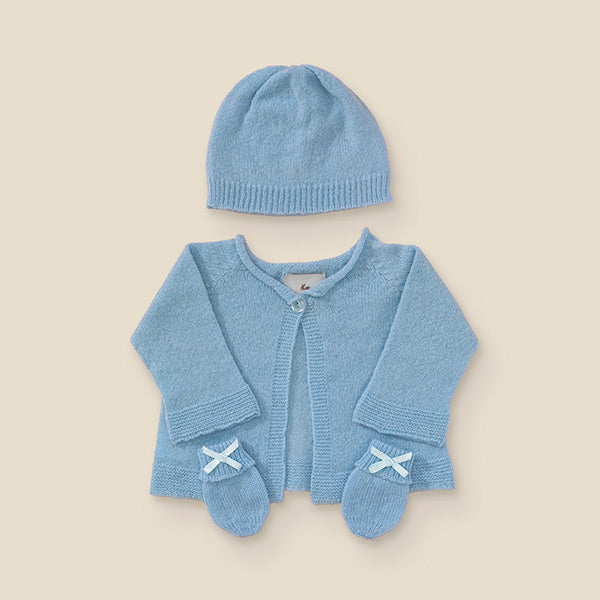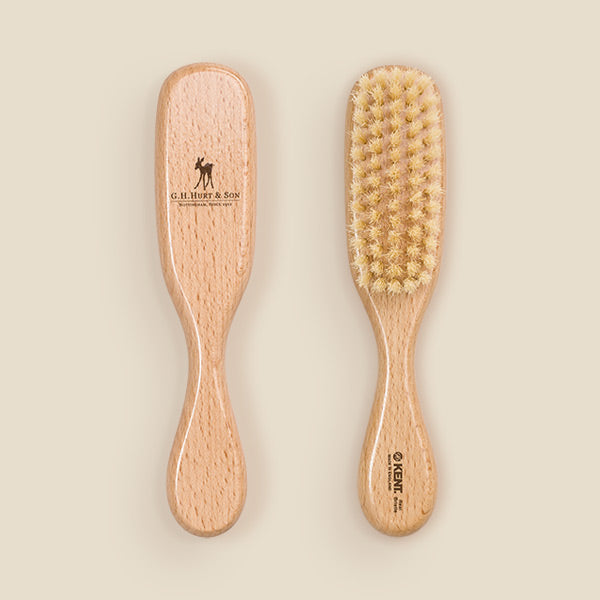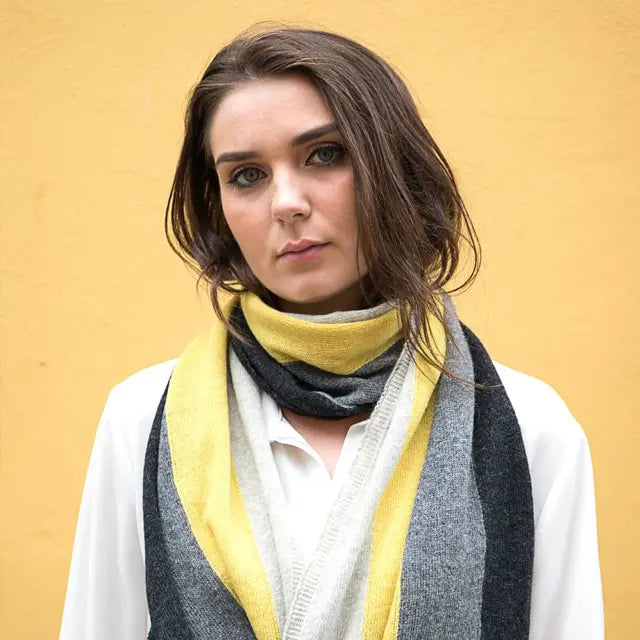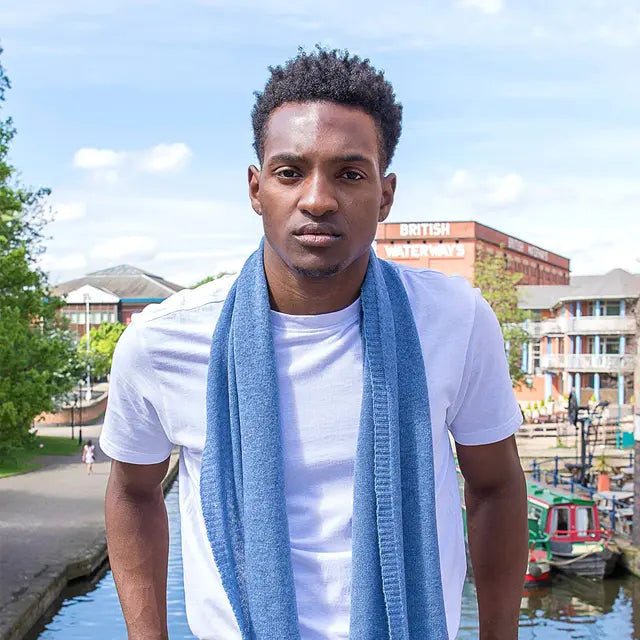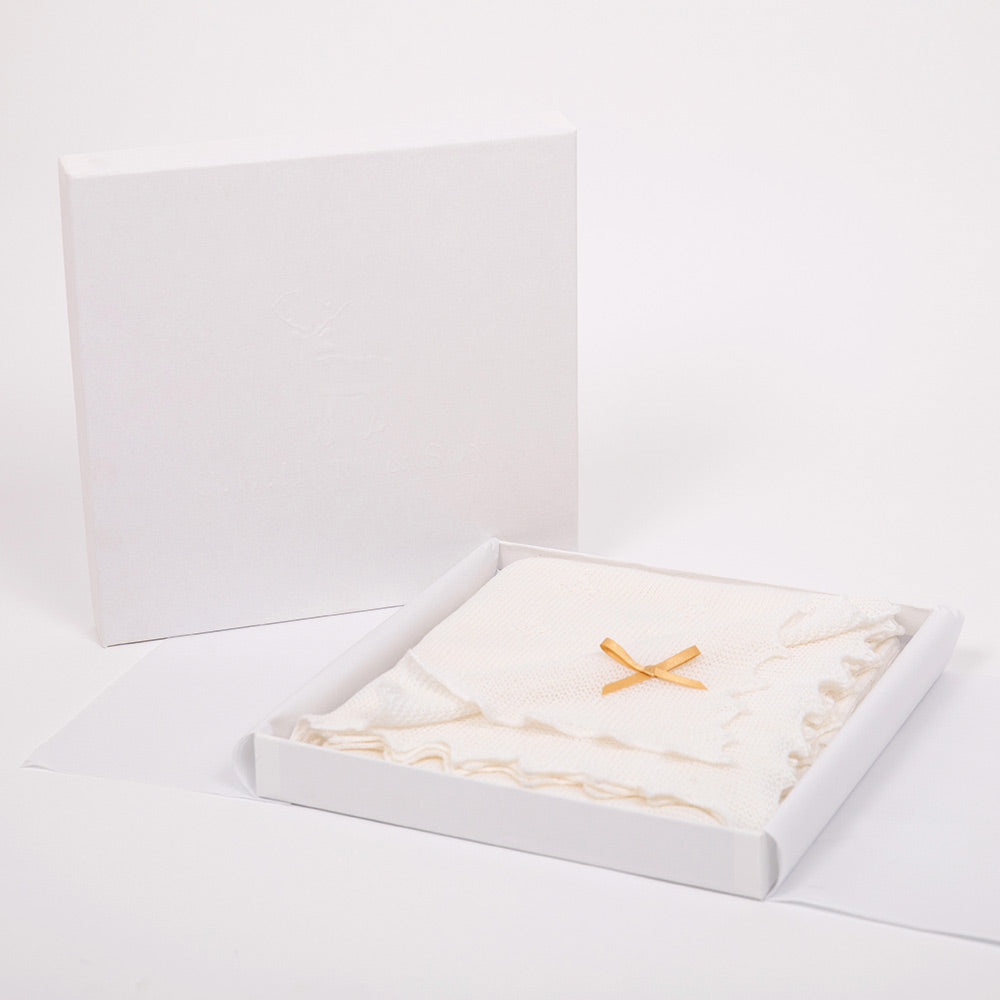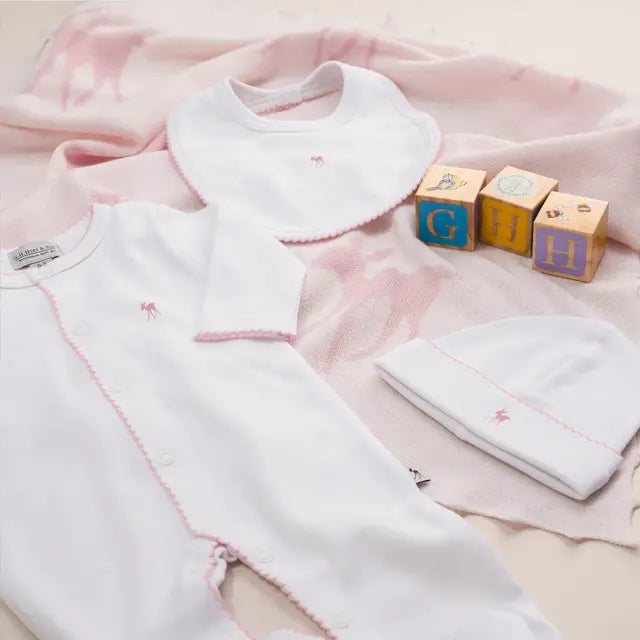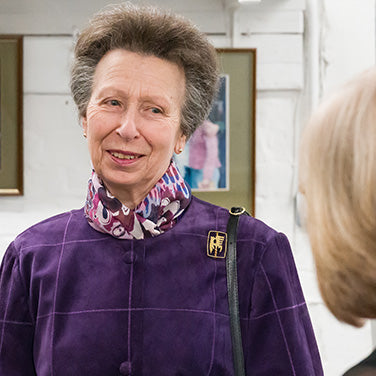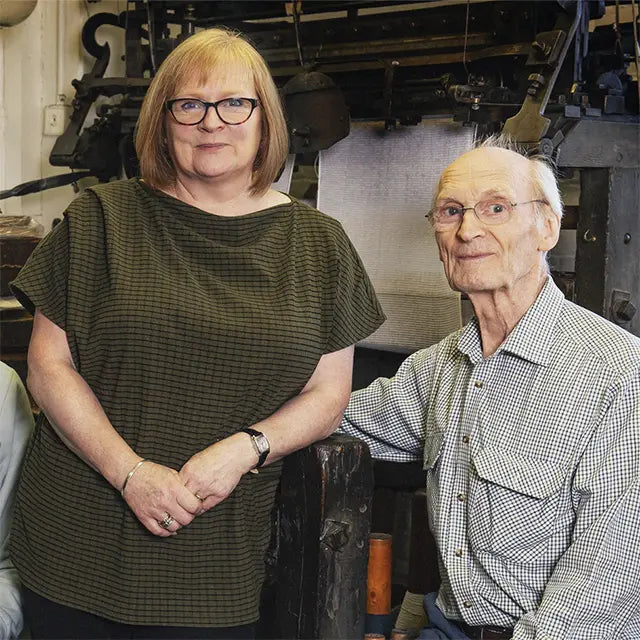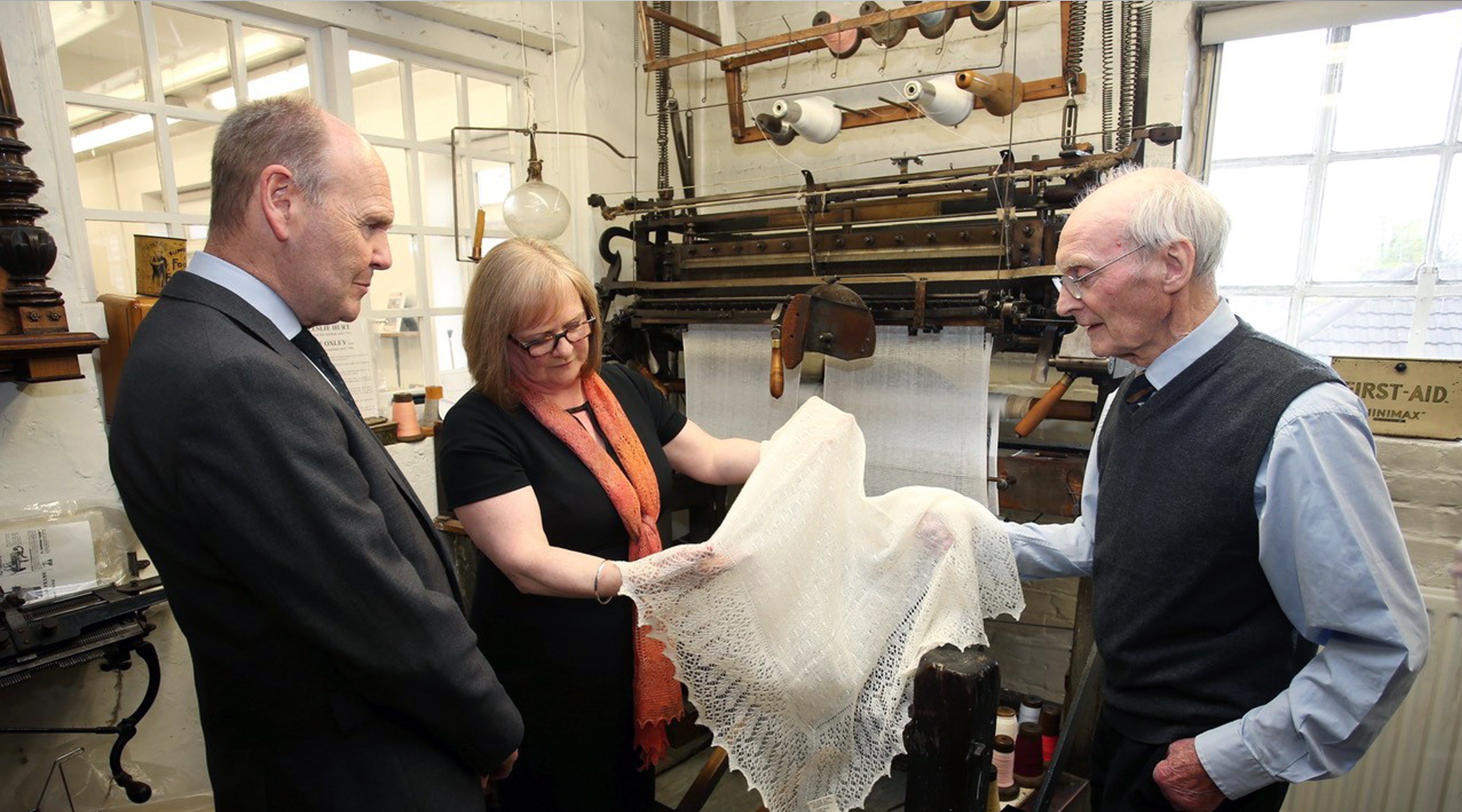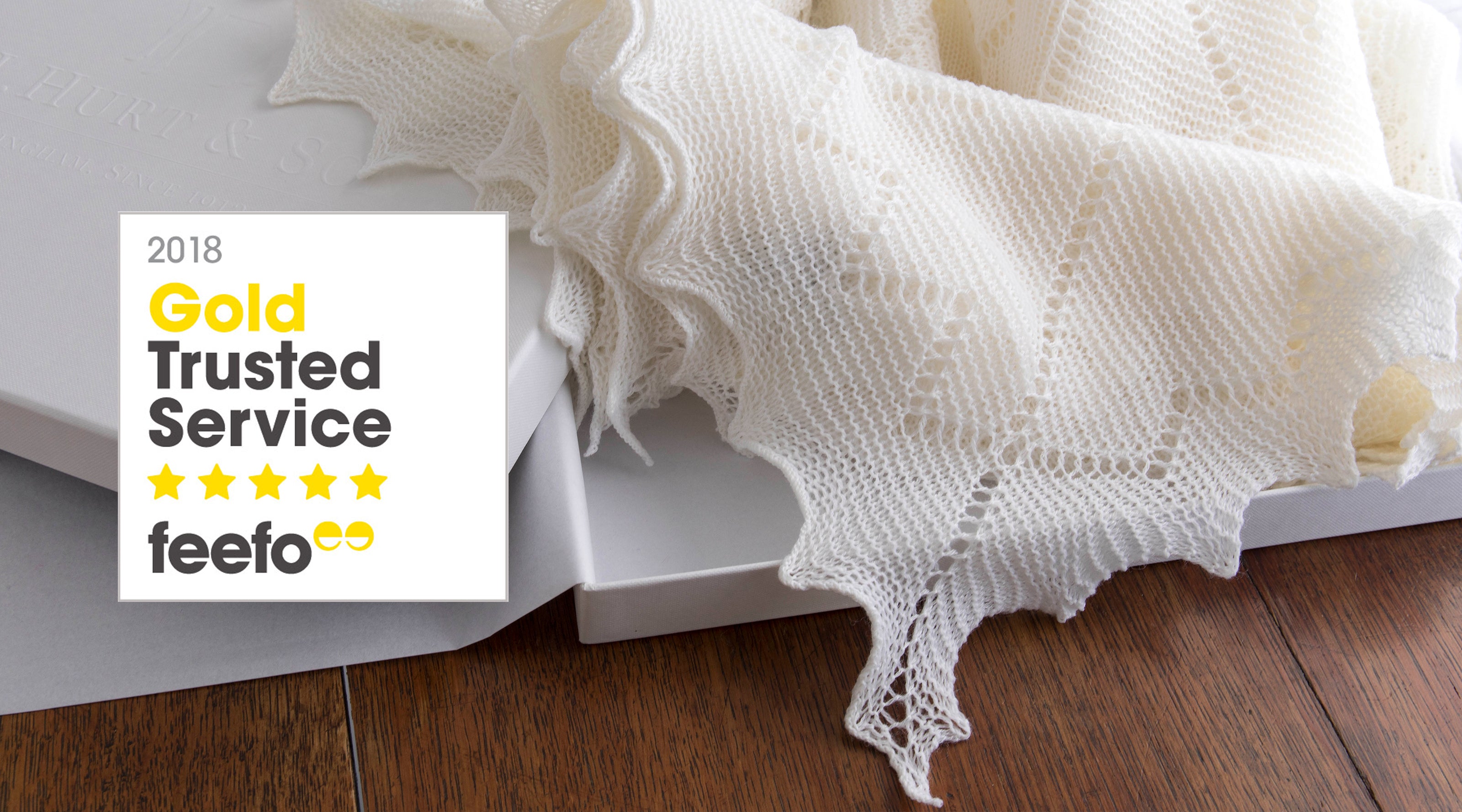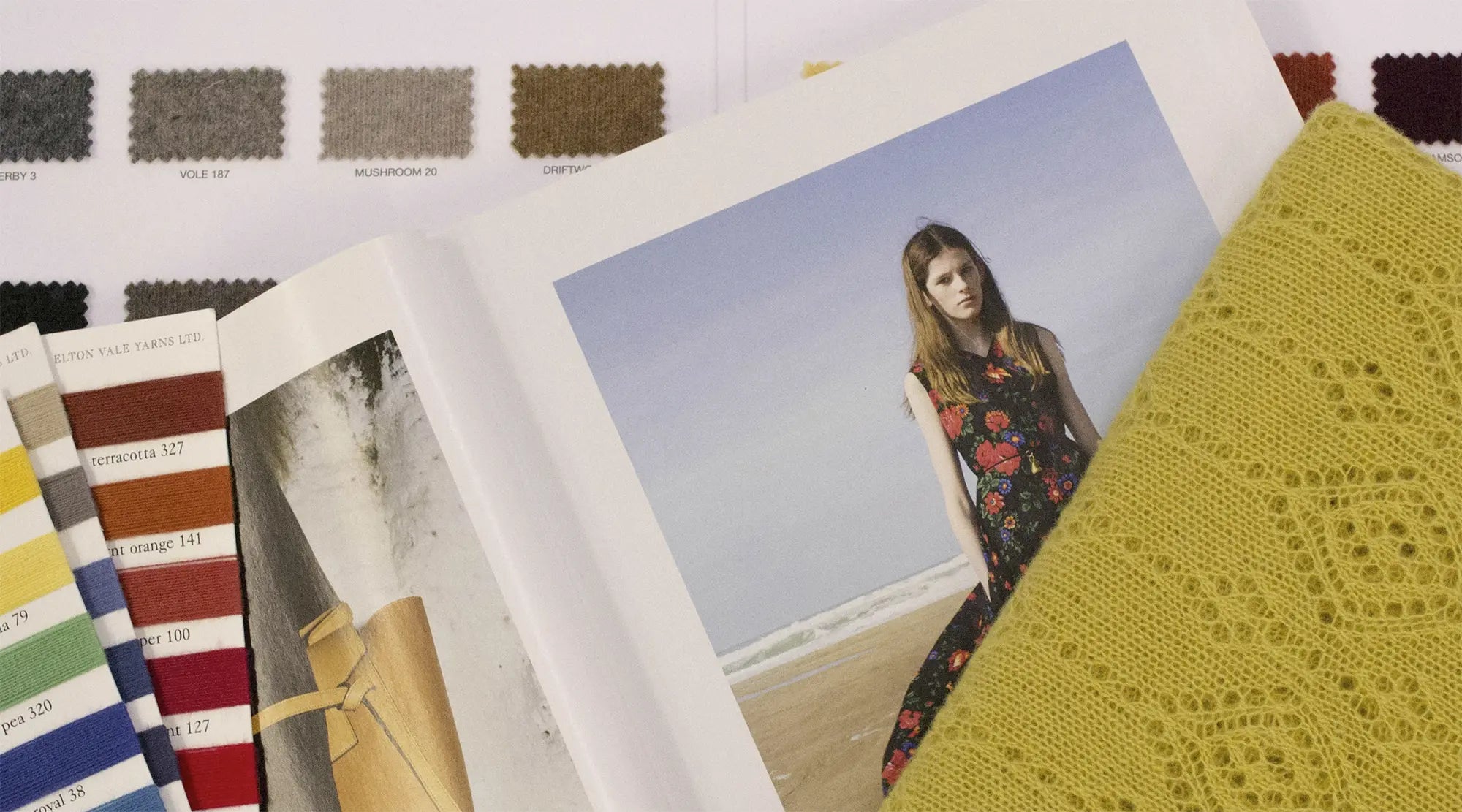
Design and Innovation - A Perfect Balance of Old and New
Modern design innovation, combined with traditional artisan techniques
Hidden away behind the brick façade of the Shawl Factory in Chilwell, Nottingham, England; is the last of the UK’s Framework knitting firms. However, despite its roots in Handframe knitting, having started in 1912, G.H.Hurt & Son is a hive of creative knitwear design and innovation. Back in the 80 and 90’s it was typical for the firm to make around 10,000 pieces at a time. The emphasis was on quantity. Over the past 25 years, manufacturing in Britain has evolved and we have found our survival as a centenary company has been from our artistic design & continuous innovation.

The firm now specialises in smaller batches of knitwear, that is design-led and trend-focused. We create products that are genetic to our heritage of fine lacy knitting styles, drawing from the roots of traditional Handframe knitting.
“Design and being creative is a way of thinking” says Gillian Taylor, Director and fourth generation family member - Great Granddaughter of founder George Henry Hurt.

We encourage design and innovation. For example, we employ a young designer every year in partnership with our local University – Nottingham Trent – as they have the best accredited knitwear design courses in the UK. It's a genuine, cymbiotic relationship between G.H.Hurt & Son and NTU; partnered for 25 years and still going. We offer a year long placement to a knitwear designer and they get valuable commercial experience. We get a new angle and quite often get entirely new thinking within the remit of our knitting style. A good example of this is the ‘Matilda Scarf’, which was created by Matilda during her year with us.
The firm has recently created a range of luxurious Men’s Scarves, which combine fine knitting techniques, elaborate geometric patterns and a splash of masculine colour. Gillian explains “it’s great to create new styles of knitting. The start point is often the world around you and we find Nottingham is brilliant in doing this. Items or colour or ideas that are often familiar to us, but can be made into a pattern or an interesting mix of colour within knitting. We also have to keep an eye on the latest trends. So, well known fashion magazines like “Vogue” are required reading at home. Other times, by experimenting with yarn, colour and our knitting machines, we get something really interesting, completely by accident"
It takes more than 1 person to create a new scarf design. Gillian and her design colleagues lead the creative part of the process. But the final design often requires ‘tweaking’ on the modern computer-aided knitting machines. Head Mechanic Reg’ applies his extensive experience to this element. Then, the finishing tasks need to be considered, as every scarf at the Shawl Factory is hand finished. It takes as many as 8 pairs of hands to make one of the firm’s beautifully knitted shawls and scarfs. So, it's a team effort to get the end product right.

“I’ve been working with yarns my whole life. It's a craft I learned from my Father Henry, who is also really clever with the knitting machines too”, says Gillian. “We work hard to use the best British spun yarns, although some of our yarns come from Italy these days. The Italians spin such fine exquisite yarns. But we are using mostly British spun yarns of the highest quality for what we do”.
It has always been about the knitting machines. At one time, for us, that meant an artisan knitter, working the Handframe. These days, it’s a computerised machine run by highly skilled knitting technicians. Although the latest machines still can’t quite recreate what a Handframe knitter could do, there are new generations of machines on the market which offer much more intelligent control. The machines are sophisticated and improving quickly with technological development. When each needle point is able to sense what’s happening themselves and feedback directly to their main computerised control, all on the fly, we can start thinking about knitting completely differently. The future for knitting design is quite exciting.

Another unique design inspiration is the firm's archive of Fine Knitted Lace Patterns. We have such riches with our 100+ years of knitting patterns. Most of them were originally used on Handframes, and translated over to the modern machines recently. These patterns are unique and quite beautiful, such as the one used in the ‘Super-fine Merino Wool Christening Shawl’, or the many other Shawls we do for babies.
We take design very seriously and we aim to continue with our unique style of fine lacy knitting, to carry on that tradition. As well as innovate and incorporate new ideas and new ways of doing things. Hopefully, we can keep going for another century.
